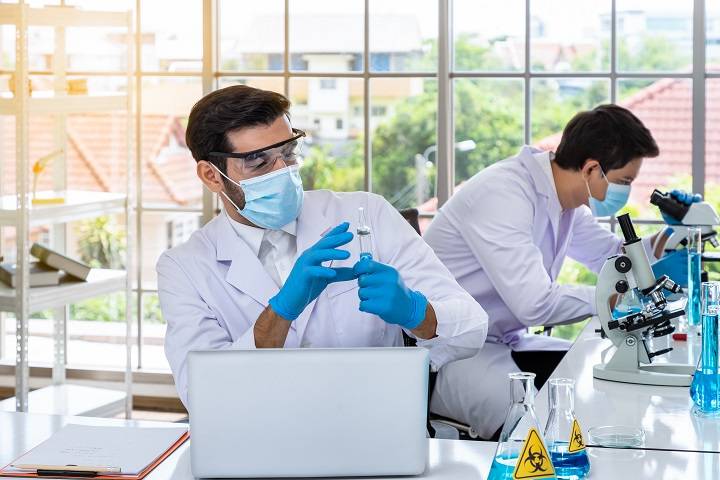
What is GLP in pharmaceutical?
Good Laboratory Practices (GLP) are a set of quality standards for the conduct of non-clinical safety studies. These studies are used to evaluate the safety of new drugs, chemicals, and other products before they are tested in humans. GLP ensures that these studies are conducted in a consistent and reproducible manner, and that the data generated is reliable and accurate.
The GLP regulations are set by the International Conference on Harmonisation of Technical Requirements for Registration of Pharmaceuticals for Human Use (ICH). The ICH is an international organization that develops harmonized guidelines for the pharmaceutical industry. The GLP regulations are also adopted by many national governments.
Good Laboratory Practice (GLP) is a set of principles and guidelines that ensure the consistent quality, integrity, and reliability of non-clinical laboratory studies. These studies play a critical role in supporting the safety and efficacy assessments of various products, including pharmaceuticals, chemicals, and medical devices registration.
.
Get in touch today to learn more about how we can help you achieve GLP compliance – With Our GLP Consulting Services
Why is GLP Important?
GLP is crucial because it establishes a standardized framework for conducting and documenting laboratory studies. This ensures that the data generated is accurate, reproducible, and can be used to make informed decisions about the safety and efficacy of products. GLP also promotes international harmonization of testing standards, enabling the acceptance of study results across different countries and regulatory agencies.
The Principles of GLP

- Quality Management Quality management is the cornerstone of GLP. It involves the implementation of comprehensive systems and procedures to monitor and ensure the quality of study processes, data, and reports. By adhering to strict quality control measures, errors and inconsistencies are minimized, leading to reliable and credible results.
Also read : Quality Management System: Improve Your Organization’s Performance
2. Personnel– Highly trained and qualified personnel are essential for maintaining GLP standards. Staff involved in conducting studies should possess the necessary expertise and experience. Regular training and continuing education programs ensure that personnel stay updated on the latest methodologies and techniques.
3. Facilities and Equipment –
-
- Facilities: The laboratory environment must be suitable for the intended studies, ensuring that factors like temperature, humidity, and lighting do not interfere with the results.
- Equipment: All laboratory equipment must be properly maintained, calibrated, and validated. This ensures that the equipment’s performance does not compromise the accuracy of the data.
- Materials – Materials used in studies, such as reagents and test substances, should meet stringent quality standards. Their sources, handling, storage, and use must be well-documented to prevent contamination or degradation of study samples.
- Methods The methods and procedures used in studies must be scientifically sound, validated, and well-documented. Any deviations or modifications from established methods should be justified and documented to maintain the integrity of the study.
- Records Comprehensive and well-organized records are essential for traceability and reproducibility. All aspects of the study, from materials used to observations made, must be accurately documented. This documentation should be retained for a specified period, allowing for future reviews or audits.
- Reporting Study results should be reported accurately and objectively. The reports must provide a clear overview of the study objectives, methods, results, and conclusions. Any limitations or uncertainties associated with the study should also be transparently communicated.
Compliance with GLP
- Regulatory Requirements Regulatory agencies, such as the U.S. FDA and the European Medicines Agency (EMA), set forth GLP regulations that organizations conducting non-clinical studies must follow. Compliance with these regulations is essential for gaining approval or clearance for products.
- Audits Regular audits are conducted by both internal quality assurance teams and external regulatory bodies to ensure that GLP principles are being followed. Audits assess all aspects of study conduct, data integrity, and compliance with established procedures. They help identify areas for improvement and ensure that studies meet the required standards.
Conclusion
In conclusion, Good Laboratory Practice (GLP) is a vital framework that ensures the reliability, integrity, and quality of non-clinical laboratory studies. By adhering to the principles of GLP, organizations contribute to the generation of accurate and trustworthy data that supports the safety and efficacy assessments of various products.
GLP’s emphasis on quality management, personnel competence, facilities and equipment, materials, methods, records, reporting, regulatory compliance, and audits collectively ensures that the scientific community and regulatory agencies can rely on the results of these studies for making informed decisions.
Further Reading –
GxP Compliance Software: Ensuring Quality & Regulatory in Life Sciences
CMC Regulatory Compliance in the Pharmaceutical Industry
Technical Writing for Quality Management System (QSM)
by admin
I am a seasoned GxP expert and the founder and CEO of GxP Cellators, a consulting firm that provides GxP advisory and auditing services to clients across the globe. My mission is to help clients achieve excellence in quality, compliance, and remediation, and to foster a robust quality culture in their organizations.

